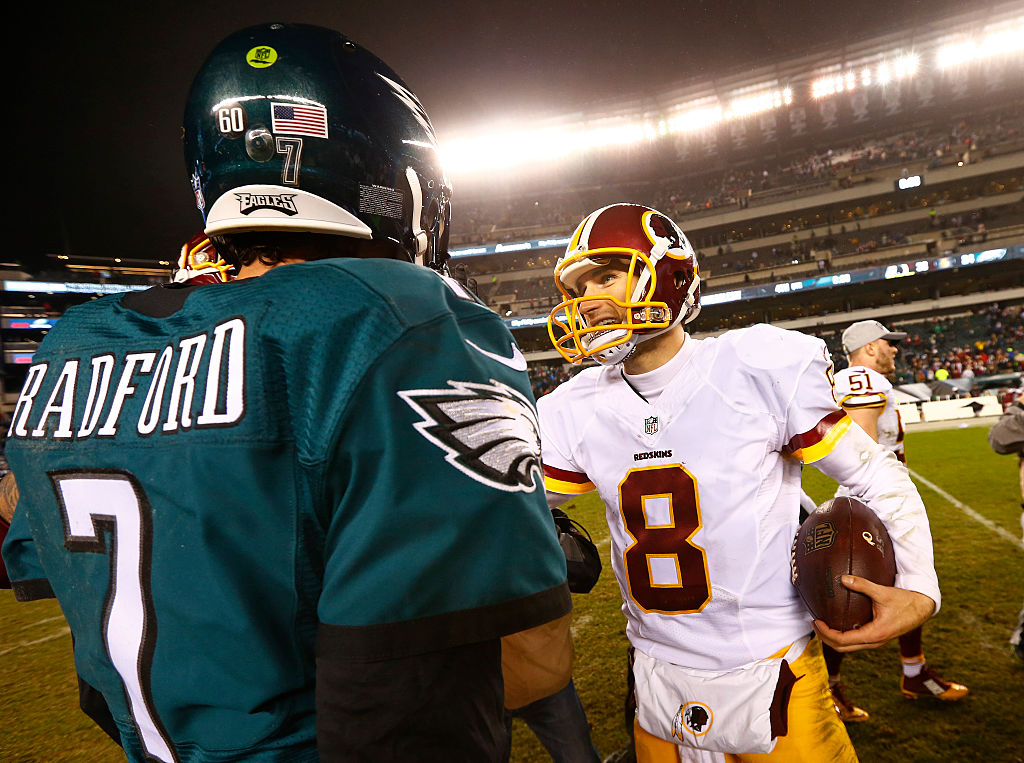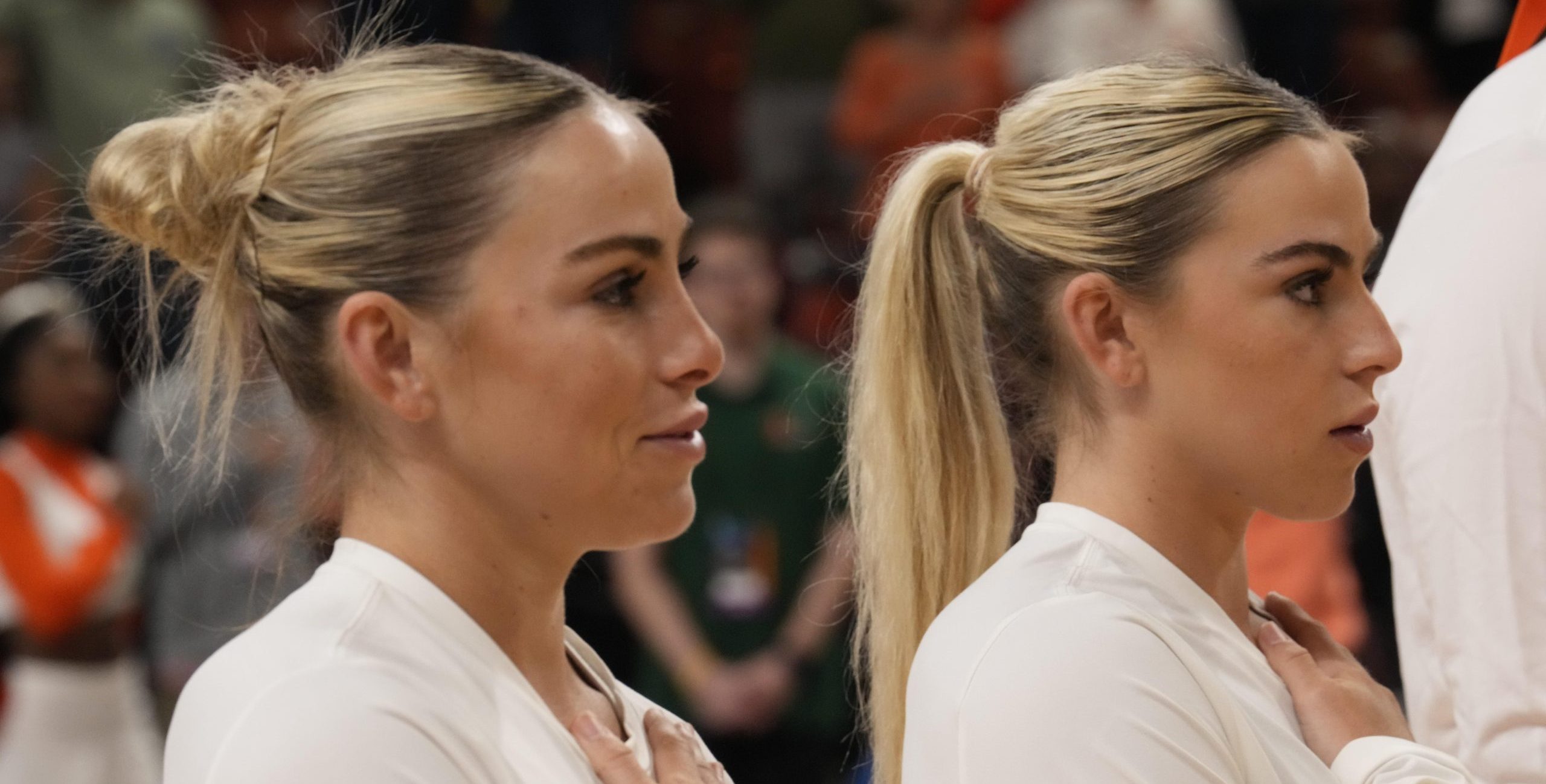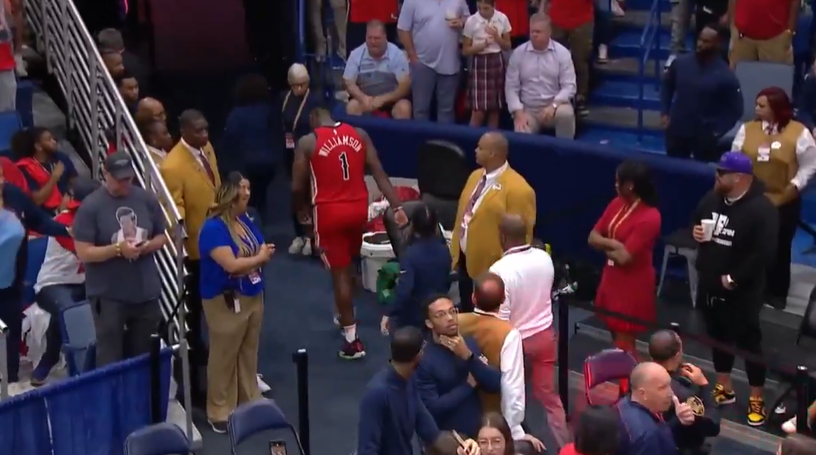What to pay a quarterback: It’s an evergreen conundrum for the average NFL team—and “average” may be the operative word in that statement, at least in terms of the latest contract developments around the league. But with quality options at the position in short supply, it’s not surprising that the Philadelphia Eagles, Baltimore Ravens (with caveats) and Washington made moves this week to keep their in-house quarterbacks their own for at least the 2016 season.
In the preceding days, the Ravens have—as long expected given the way the deal was initially put together—restructured and thus extended the contract of Joe Flacco, Washington has franchise tagged Kirk Cousins and the Eagles have given Sam Bradford a two-year deal of the “prove it” variety. A deal between the New York Jets and Ryan Fitzpatrick is also imminent. So what does this say, not just about the nature of contracts these days but also the state of the young quarterbacks around the league?
http://gty.im/498293094
With Flacco, these contract machinations are an inevitable result of the six-year, $120.6-max value deal he signed after fortuitously throwing 11 touchdowns to zero interceptions in the Ravens franchise’s second Super Bowl, victory while on the brink of free agency. While Flacco was in no danger of not being in the Ravens’ plans, regardless of how the 2012 season played out, he managed to put himself in the situation to get paid. The situation, however, put the Ravens in the position to owe him over $28 million in 2016 and $31.15 million in 2017—untenable cap numbers that could have paralyzed the team’s ability to pay other pending free agents. Thus, the three-year extension that came down earlier in the week, worth $66.4 million overall , with $40 million in signing bonus, money converted from salary to a yearly prorated amount that gets Flacco’s yearly cap hit in the more manageable $24-to-$28 million range for the remainder of the deal and decreased the dead money hit considerably over time.
http://gty.im/502625812
Meanwhile, in the absence of getting a long-term deal completed, Washington franchise tagged Cousins for $19.953 million—ideally the amount of cash he’s looking for every year, but with a small sample size of one season starting, the one-year contract in lieu of what’s next works best for the team. And the Eagles chose to hold onto Bradford, as well, giving him a player-friendly two-year deal with a maximum value of $35 million this week. The deal, though, is also team-friendly: His $22 million guaranteed comes in the form of his $7 million 2016 salary, his $11 million 2016 signing bonus (split over the two years) and a $4 million roster bonus due him in 2017. All three of these quarterbacks have been mostly good and sometimes great over their careers, but with Bradford’s injury history, Flacco coming off of the first major injury of his career (torn ACL and MCL suffered in November) and Cousins having little body of work to go on, these paydays become auspicious. And they belie a significant something about the league: Namely, that quarterbacks are at a premium today.
Much has been written about the concept of “quarterback purgatory,” where a team hitches their wagon to a perceived middling passer. Flacco has been lumped in this category, as have other quarterbacks, like the Cincinnati Bengals’ Andy Dalton and the Detroit Lions’ Matthew Stafford. But the reality is, doing so is better than the alternative. This is not a good year for drafting a quarterback. There are upsides to numerous passers in the 2016 draft class, to be sure, but none have obvious NFL starting experience or, with the body of work in college, have proven their ability to do so. Players like Bradford, Flacco and Cousins have, despite the drawbacks, the injury backgrounds or, in Cousins’ case, one up-and-down season (which is why using the franchise tag was a prudent move). The known, right now, is more appealing than the unknown at the quarterback position, namely because there are no Andrew Luck-types walking through anyone’s door this year as rookies.
Newsome: “Joe is our QB and we’re proud to say that. Teams struggle with the QB position.”https://t.co/yv3AzzK56n pic.twitter.com/DTxBGflZe2
— Baltimore Ravens (@Ravens) March 3, 2016
And paying these players is increasingly not a problem, given that the salary cap rose by nearly $13 million from a year ago and will continue to rise similarly, year-by-year, for the next few. The baseline for quarterback deals is around $19 to $20 million per year—the Cousins franchise tag number is a good indicator of that—and teams are in a much better position to pay those dollars out. When quarterback, for better or for worse, is the highest profile position on a team, getting that position sorted is a major priority. Unknown quantities need not apply when a team already has someone who is, at the very least, serviceable. Yes, the “elite” word has been thrown around about Flacco—mainly because of his contract numbers, which need to be ignored—and he’s an exception in a sense relative to these other two deals because 1: It was a restructure and 2: Flacco is objectively better at his job than Bradford or Cousins. Even with him, we aren’t talking about the cream of the NFL crop here.
Joe Flacco is now under contract through the 2021 season: https://t.co/5NdF2WYn6M pic.twitter.com/vQH3VWR0Nk
— Baltimore Ravens (@Ravens) March 2, 2016
But that doesn’t need to be the case. What NFL teams need are good quarterbacks. There are not 32 Aaron Rodgerses to go around, and there needn’t be. Contrary to popular belief, and recent history, teams don’t need eliteness at the quarterback position but rather someone who they can trust. Putting that trust in someone like Bradford, with his injury history, or Cousins, with his one year’s worth of starting experience, may feel counterintuitive, but look at the alternative: 21-year olds who need grooming to get to the points where Cousins, or Flacco, or Bradford are presently in their careers. And paying these guys $20 or $25 million a year is becoming a much easier venture than doing so to a greenhorn rookie drafted in Round 1.
The circumstances for each of these three quarterbacks signed, tagged or extended this week are different. Flacco’s initial deal was designed to be reworked from the minute it happened; Cousins is getting the franchise tag at the going quarterback rate because it’s essentially a one-year prove-it deal that benefits Washington and the Eagles can move on from Bradford in 2017 if 2016 doesn’t pan out, what with his $22.5 million cap hit next year but just $9.5 million in dead money if he’s cut. But the thinking is the same: The known is better than the unknown. Are there franchise player-capable quarterbacks in this year’s draft? Who knows. But Flacco, Bradford and Cousins (and soon, Fitzpatrick) have already shown their abilities to be that. The reward for paying these players are greater than the risks, where a rookie quarterback this year has greater risks than (at least) immediate rewards. With an ever-increasing salary cap and an ever-dwindling pool of NFL-ready quarterbacks to choose from in the draft, it’s not surprising these three have been locked down for at the minimum, the 2016 season. And it won’t be surprising when it happens again, and again, and again.





